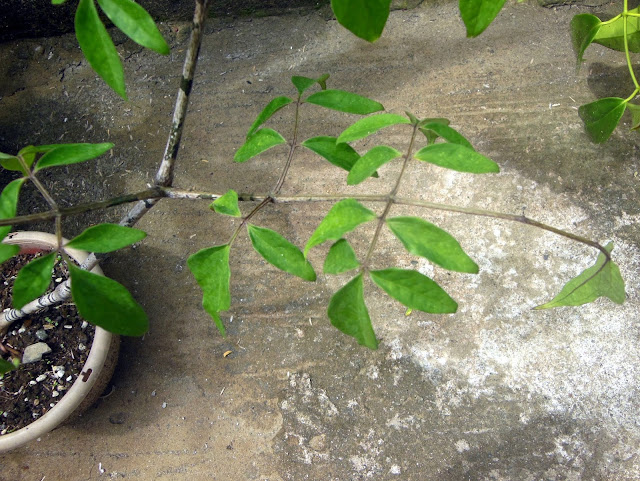Beautiful weeds P.2: Gonatopus boivinii
The Giraffe's Knee (Gonatopus boivinii) is a tropical African species that is the most often seen species in collections worldwide. The common name refers to the swollen portion of the petiole which resemble a knobby giraffe knee. This plant was given to me some years ago and remember being quite happy when I received it. If only I knew what I know today.
Gonatopus boivinii is definitely a weedy plant, and the reason behind it lies on its leaflets, which develop into new plants just a few days after detachment. This is a species that can definitely colonize neighboring pots. Another African aroid genus, Zamioculcas, also reproduces asexually by means of its leaves, but in these plants, the leaflets are more persistent and often drop off from the plant when already yellowing and thus with little energy reserves. When I used to have big plants of Z. zamiifolia, I have observed the yellowed leaves to have a chancy survival rate; most often these just wither away. In G. boivinii, the leaflets are shed when still very fresh and therefore with very high likelihood of callusing and developing a new growth. If not detected in time, these plantlets turn into juvenile plants real quick, with deep-penetrating roots. The potato-like tubers have thick and tenacious roots which makes merely pulling the plants out ineffective- do so and you'll end up with a handful of above-ground vegetative parts, with the underground storage organ still intact and ready to shoot out a new leafy growth faster than you can say "oh shit". Merely digging the tubers leave the possibility that daughter tubers are going to be left behind, ready to fill the niche left out by the mom tuber. To get rid of the invaders, you will need to overturn the pot and sort out the Gonatopus tubers. That of course is quite some work especially if we are talking here about large pots. Your troubles are increased exponentially when the plant involved is a particularly touchy one that resents any disturbance of its roots. Should you decide to keep this species, or already have it, the best way to control its spread is by collecting the fallen leaves as soon as you see them. Vigilance is the key. But you should also be responsible by not throwing those leaves just about anywhere, or these will quickly become invasive, which of course isn't good for the environment in general and biodiversity in particular. Bury them in a compost heap, or lay them down under the sun until they desiccate.
 |
| This is a distinguishing feature of Gonatopus, the pulvinus. A few aroid genera have this, notably Anthurium. |
 |
| A fallen leaf on a pot of Aglanonema rotundum. Note how the petiole has oriented itself towards the soil. |
I have often contemplated destroying my Gonatopus, but those petioles are just too nice not to have them around. And I gotta admit that those inflorescences, though quaint, have a strange quality to them that merits this plant's cultivation.
If only those leaflets would behave better.





Comments
Post a Comment